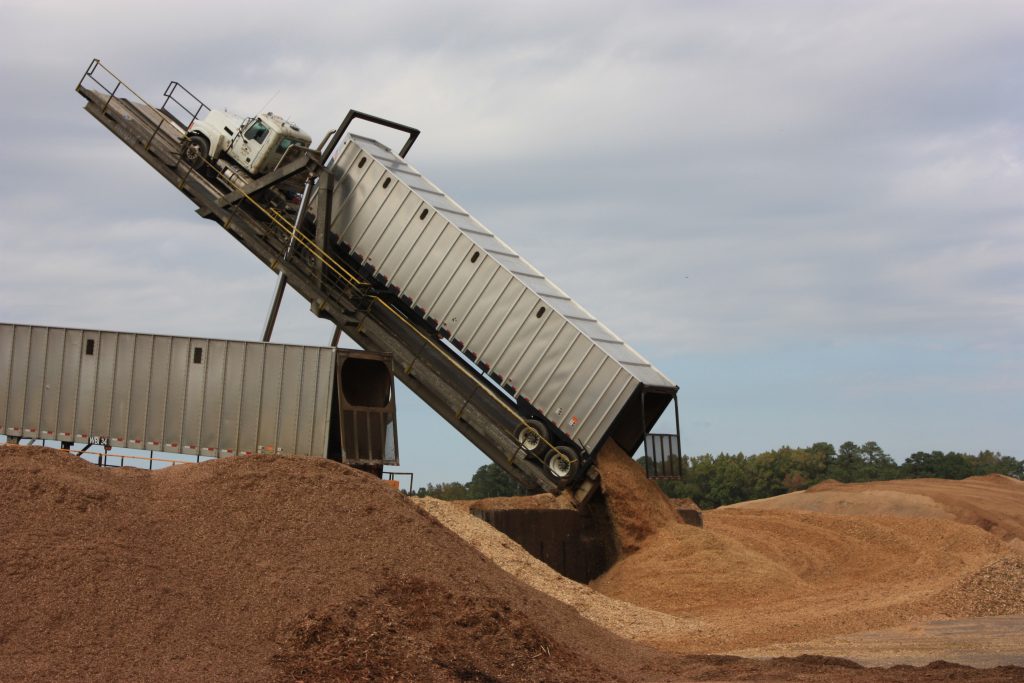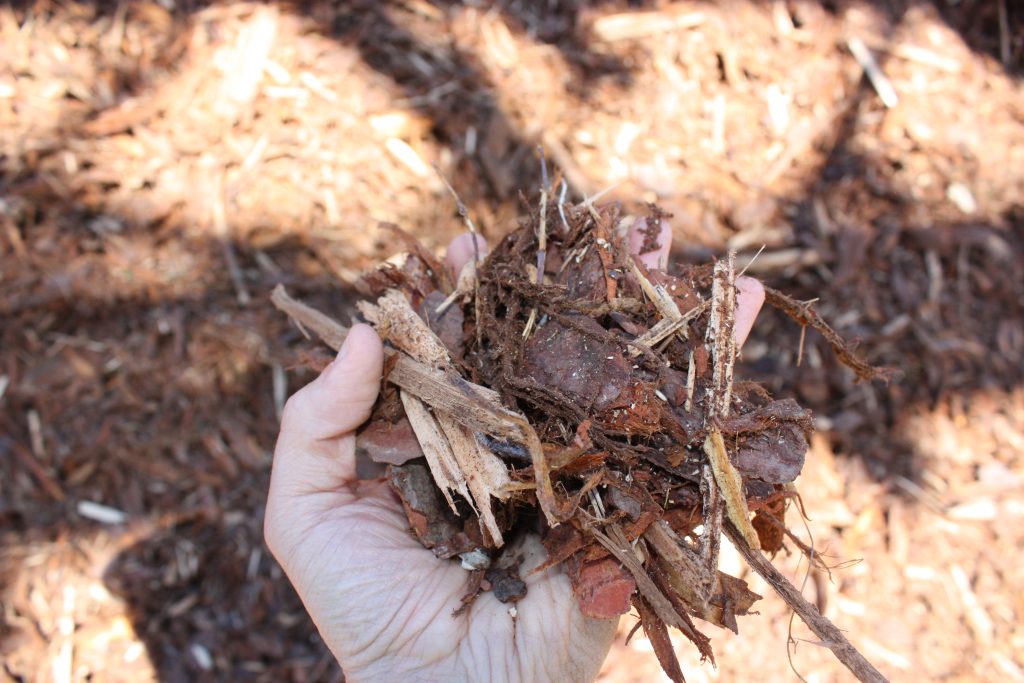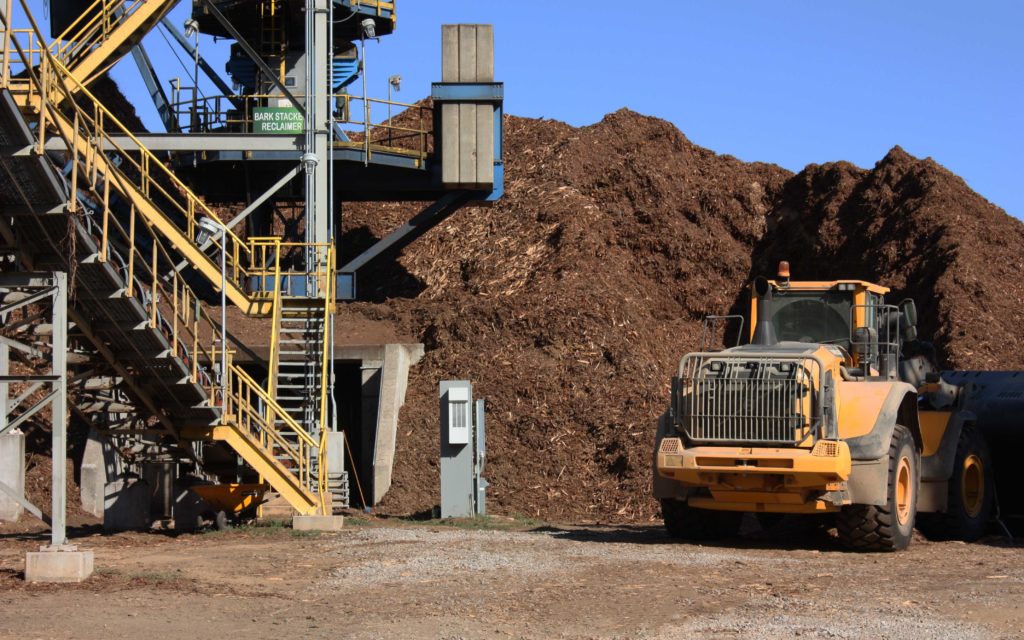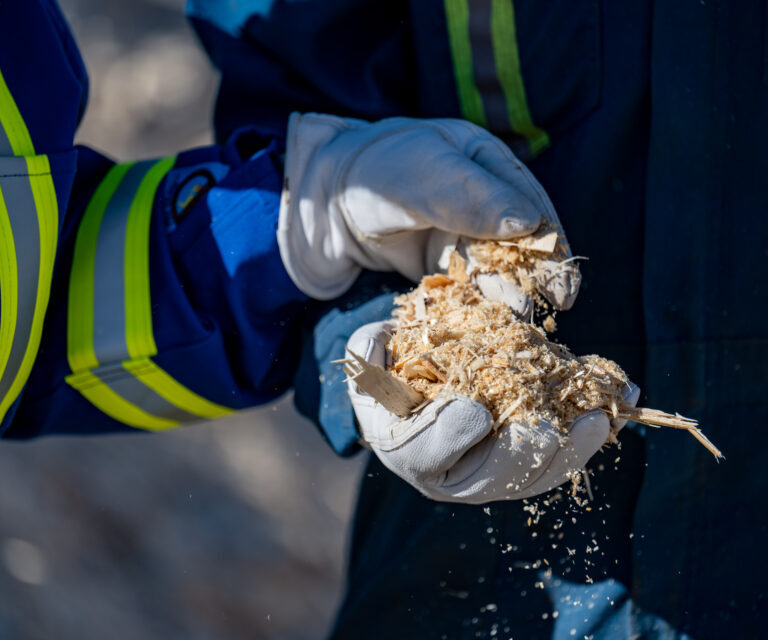Heard of hog fuel? The name might not be immediately familiar, but it’s likely you’ve come across it somewhere, in some form.
A type of fuel made from the unprocessed waste debris, bark and organic matter produced as a result of commercial forestry, hog fuel is used to power things like boilers and dryers at industrial forestry facilities (as it is at Drax Biomass’ pellet manufacturing plants). However, it has wider uses, such as for lining flower beds and garden paths, too.
In short, it’s a valuable and versatile substance. But what else is there to know about hog fuel?

Truck delivering low value wood to a pellet plant
The name
The most eye-catching thing about hog fuel is its name, and this has several possible origins. One is the instrument used to create it: a hammer hog – a machine made up of several spinning hammers that chip wood and wood fiber down into small, rough pieces. The other possible derivation is from Norway, where ‘hogge’ and ‘hogde’ literally mean ‘chopped’ (present and past tense respectively). There’s no consensus on which of these origins hog fuel owes its name to, however – instead, it’s likely indebted to both.

Hog fuel at Amite BioEnergy
What it’s made of
Like its porcine cousin the sausage, hog fuel can be made from a wide array of ingredients. However, all come from the forestry and wood products industries and are all thought of as waste products. The rule is, if a wood product isn’t good for anything else, it’s good for hog fuel.
Hog fuel includes bark, wood chippings, shavings and sawdust – all plentiful by-products of forestry and saw mills. Because hog fuel is often piled up outside, on the ground, dirt and even ice (in cold enough climates) can end up in the mix. However, an increasing amount of hog fuel customers are moving hog fuel to hoppers and bins, or at least a cement pad, to reduce foreign debris.
Dryer at Morehouse BioEnergy is heated with hog fuel
How it’s used
The most common use of hog fuel is to power equipment used within the forestry industry. At Drax Biomass’ pellet facilities this means it’s used to fuel the massive dryers, which ensure wood chips have a moisture content of between 11.5% and 12% before being pelletized. Trucks travelling between forest and facility arrive at Drax’s pellet plants throughout the day to deliver it, helping ensure nothing goes to waste from properly managed forests.
However, it also has uses beyond as a fuel. Its toughness and resilience makes it a great material for flooring outdoor areas likely to sustain heavy impact, like paddocks, dog tracks, and pathways.
Hog fuel may not be the most glamorous part of the forestry industry – neither its name nor its physical characteristics make it particularly attractive. What is, however, is how it turns a plentiful waste product into a useful, renewable fuel.










